Recent Posts
Mold in Rental Properties: Tenant and Landlord Responsibilities
7/17/2024 (Permalink)
Mold in rental properties is a concern that both tenants and landlords need to address promptly to maintain a safe and comfortable living environment. Understanding the responsibilities of each party can help in preventing mold growth and ensuring timely remediation when it does occur. In this blog post, we will outline the key responsibilities of both tenants and landlords regarding mold in rental properties.
Tenant Responsibilities
Reporting Mold Issues Promptly
As a tenant, your first responsibility is to report any signs of mold to your landlord or property manager immediately. Early detection and communication are crucial in preventing the spread of mold. Look for common signs such as discoloration on walls, ceilings, or floors, and a musty odor.
Maintaining Cleanliness and Ventilation
Tenants play a vital role in preventing mold growth by maintaining cleanliness and proper ventilation in their living spaces. Regular cleaning, especially in moisture-prone areas like bathrooms and kitchens, can help prevent mold. Ensure that exhaust fans are used during and after showering and cooking to reduce humidity levels. Additionally, avoid blocking air vents and keep windows open when weather permits to promote air circulation.
Addressing Minor Leaks and Moisture
If you notice any minor leaks or condensation, it’s important to address them immediately. Wipe down any moisture and notify your landlord if repairs are needed. Simple actions like using a dehumidifier and ensuring that water doesn’t accumulate in basements or other damp areas can also be effective in controlling moisture levels.
Landlord Responsibilities
Conducting Regular Inspections
Landlords are responsible for conducting regular inspections of their rental properties to identify potential mold issues. These inspections should include checking for water leaks, condensation, and adequate ventilation systems. Regular maintenance can prevent minor issues from escalating into significant mold problems.
Repairing Leaks and Water Damage
Promptly repairing any leaks or water damage is one of the most critical responsibilities of a landlord. This includes fixing leaky roofs, plumbing issues, and any other sources of water intrusion. Addressing these problems quickly can prevent mold from developing and spreading throughout the property.
Providing Adequate Ventilation and Dehumidification
Landlords should ensure that their rental properties have adequate ventilation systems in place, including functioning exhaust fans in bathrooms and kitchens. In areas with high humidity levels, providing dehumidifiers can help control moisture and reduce the risk of mold growth.
Educating Tenants
Educating tenants about mold prevention and their responsibilities is another important task for landlords. Providing tenants with information on how to prevent mold, recognize its early signs, and the importance of reporting issues promptly can foster a collaborative approach to mold prevention and control.
Working Together
Effective communication between tenants and landlords is essential in managing mold in rental properties. Tenants should feel comfortable reporting mold issues without fear of retaliation, and landlords should respond to these reports promptly and professionally. By working together, both parties can maintain a mold-free living environment and ensure the property remains in good condition.
At SERVPRO®, we understand the importance of addressing mold issues promptly and effectively. Our team of experts is here to assist with mold inspection, remediation, and prevention strategies to keep your rental property safe and comfortable. If you need professional help, don’t hesitate to contact us.
By following these guidelines, tenants and landlords can work together to prevent and address mold issues, ensuring a healthy living environment for all.
Steps to Prepare for a Water Emergency
6/11/2024 (Permalink)
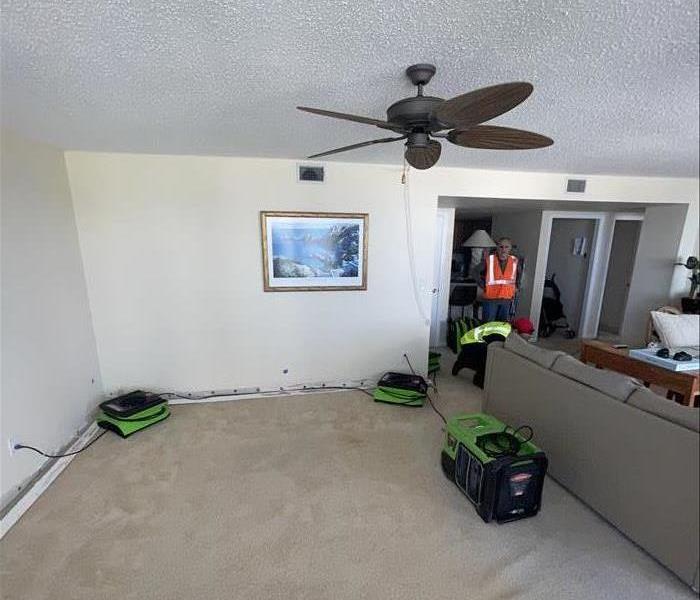 By following these steps and being prepared, you can help minimize the impact of a water emergency on your home and belongings.
By following these steps and being prepared, you can help minimize the impact of a water emergency on your home and belongings.
Water emergencies can strike unexpectedly and cause significant damage to your property if you're not adequately prepared. Whether it's a burst pipe, flooding, or a plumbing malfunction, being proactive and prepared can help minimize damage and protect your home and belongings. In this guide, we'll outline essential steps to help you prepare for a water emergency and mitigate potential damage.
Know Your Home
Familiarize yourself with the layout and key components of your home's plumbing system. Locate the main shut-off valve for the water supply and learn how to turn it off in case of an emergency. Understanding your home's plumbing system will help you act quickly and decisively during a water emergency.
Inspect and Maintain Your Plumbing
Regular maintenance of your plumbing system can help prevent water emergencies. Inspect pipes, faucets, and appliances for signs of leaks, corrosion, or damage. Repair any issues promptly to prevent them from escalating into more significant problems. Consider scheduling annual plumbing inspections to catch potential issues early.
Assemble an Emergency Kit
Put together an emergency kit that includes essential supplies and tools to help you respond to a water emergency. Items to include in your kit may vary but could consist of flashlights, batteries, a first aid kit, non-perishable food, water, blankets, and a portable radio. Keep your emergency kit in a readily accessible location.
Invest in Water Detection Devices
Consider investing in water detection devices, such as water leak sensors and alarms, to alert you to potential leaks or flooding. These devices can provide early warning of water-related issues, allowing you to take swift action and prevent extensive damage. Place water detection devices in areas prone to water damage, such as basements, crawl spaces, and near appliances.
Secure Valuables and Important Documents
Take steps to protect valuable items and important documents from water damage. Store valuables in waterproof containers or elevated areas to minimize the risk of water exposure. Make digital copies of essential documents, such as insurance policies, identification, and medical records, and store them in a secure, cloud-based location.
Review Your Insurance Coverage
Review your homeowner's insurance policy to understand what types of water damage are covered and what may be excluded. Consider purchasing additional coverage or endorsements for specific water-related risks, such as flood insurance or sewer backup coverage. Keep a copy of your insurance policy and contact information for your insurance provider in your emergency kit.
Stay Informed
Stay informed about potential water-related risks in your area, such as severe weather forecasts, flooding, or plumbing issues. Monitor local news and weather reports for updates and advisories. Being aware of potential risks can help you take proactive measures to protect your home and family.
By following these steps and being prepared, you can help minimize the impact of a water emergency on your home and belongings. Taking proactive measures and having a plan in place will give you peace of mind and ensure that you're ready to respond effectively in case of a water-related crisis.
Steps to Take Before a Tropical Storm or Hurricane Hits
5/15/2024 (Permalink)
 For professional assistance with storm damage restoration, contact our team at SERVPRO for prompt and reliable service!
For professional assistance with storm damage restoration, contact our team at SERVPRO for prompt and reliable service!
As hurricane season approaches, it's crucial to prepare your home and family for potential storms. By taking proactive measures and planning ahead, you can minimize the impact of a tropical storm or hurricane and ensure the safety of your loved ones. In this blog, we'll discuss important steps to take before the storm arrives, helping you to stay informed, organized, and prepared for any emergency.
1. Stay Informed
Monitor weather forecasts and updates from reliable sources, such as the National Hurricane Center or local emergency management agencies. Pay attention to storm tracks, projected intensity, and evacuation orders in your area. Stay informed about potential hazards, evacuation routes, and emergency shelters available in your community.
2. Prepare an Emergency Kit
Gather essential supplies and create an emergency kit that includes non-perishable food, water, medications, first-aid supplies, flashlights, batteries, a battery-powered radio, and important documents. Stock up on supplies for at least three days to ensure you have enough provisions in case of power outages or restricted access to stores.
3. Secure Your Home
Inspect your property for potential hazards and secure loose items that could become projectiles in high winds, such as patio furniture, outdoor décor, and potted plants. Trim trees and branches near your home and remove dead or diseased limbs that could pose a risk during the storm. Reinforce windows and doors with storm shutters or plywood to protect against flying debris.
4. Evacuation Planning
Know your evacuation zone and have a plan in place for relocating to a safe location if necessary. Determine evacuation routes and designate a meeting point for your family members in case you get separated. Make arrangements for pets and livestock, and consider the needs of elderly or disabled individuals who may require special assistance during evacuation.
5. Backup Power and Utilities
Invest in a portable generator or backup power source to maintain essential appliances and equipment during power outages. Test your generator in advance and ensure it is properly fueled and functioning. Turn off utilities, such as gas, water, and electricity, before the storm to prevent damage and reduce the risk of fire or electrocution.
6. Communication Plan
Establish a communication plan with family members, friends, and neighbors to stay connected during the storm. Exchange contact information and designate an out-of-state contact person as a central point of communication. Use text messages, social media, or a designated group chat to stay in touch and provide updates on your status.
By following these pre-storm preparations, you can enhance your readiness and resilience in the face of a tropical storm or hurricane. From staying informed and assembling an emergency kit to securing your home and planning for evacuation, taking proactive steps before the storm hits can help mitigate risks and protect your property and loved ones. For professional assistance with storm damage restoration and cleanup, contact our team at SERVPRO of Altamonte Springs/Longwood for prompt and reliable service. Stay safe and be prepared!
The Threat of Wildfires in Florida
4/11/2024 (Permalink)
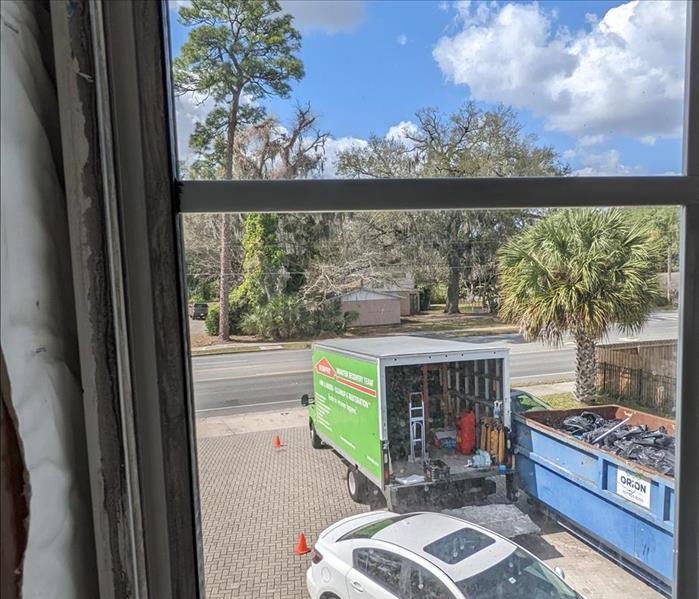 Don't wait until it's too late—start implementing these wildfire preparedness measures today to protect your home and loved ones.
Don't wait until it's too late—start implementing these wildfire preparedness measures today to protect your home and loved ones.
As a homeowner in Florida, it's important to recognize the potential dangers posed by wildfires and take proactive steps to protect your property. While Florida may be known for its beautiful landscapes and sunny weather, it's also susceptible to wildfires, especially during dry and windy conditions. In this blog post, we'll explore the risks associated with wildfires in Florida and provide practical tips on how to prepare and protect your home from this ever-present threat.
Understanding the Threat
Wildfires in Florida can occur throughout the year, but they are most prevalent during the dry season, typically from late fall through spring. Factors such as drought, high winds, and human activity can contribute to the spread of wildfires, posing a significant risk to homes and communities across the state.
Assessing Your Home's Vulnerability
Start by assessing your home's vulnerability to wildfires. Consider factors such as the proximity of dense vegetation or wooded areas, the presence of flammable materials near the home, and the condition of the roof and exterior walls. Identifying potential vulnerabilities will help you develop a comprehensive wildfire preparedness plan.
Creating Defensible Space
Create defensible space around your home by clearing vegetation and debris from the immediate vicinity. Trim trees and shrubs to create a buffer zone of at least 30 feet around structures, and keep grasses and other flammable vegetation well-maintained and watered.
Hardening Your Home
Harden your home against wildfire by using fire-resistant building materials and making necessary upgrades to the roof, windows, and exterior walls. Consider installing ember-resistant vents and enclosing eaves and soffits to prevent embers from entering the home.
Preparing an Evacuation Plan
Develop an evacuation plan for your family and pets in the event of a wildfire. Identify multiple evacuation routes and establish a designated meeting point outside the evacuation zone. Keep emergency supplies such as food, water, medications, and important documents readily accessible.
Stay Informed
Stay informed about wildfire activity in your area by monitoring local news and official updates from emergency management agencies. Sign up for emergency alerts and notifications to receive timely information about evacuation orders, road closures, and other important updates.
Maintaining Fire Safety Practices
Practice fire safety year-round by observing local regulations regarding outdoor burning, using caution when operating grills or fire pits, and properly disposing of cigarette butts and other flammable materials. Encourage neighbors to do the same to reduce the risk of accidental fires.
Seek Professional Assistance
In the unfortunate event that your home sustains fire damage, it's essential to seek professional assistance for thorough cleanup and restoration. SERVPRO® specializes in fire damage restoration, offering comprehensive services to help homeowners recover from the aftermath of a fire. Let our team handle the restoration process, allowing you to focus on rebuilding and restoring your life after a fire.
By taking proactive steps to prepare and protect your home from wildfires, you can minimize the risk of damage and increase the safety and resilience of your property. Don't wait until it's too late—start implementing these wildfire preparedness measures today to protect your home and loved ones.
Laborer to Production Operations Manager - Celebrating Success, Mentorship, and Team Spirit at SERVPRO® of Altamonte Springs / Longwood
12/6/2023 (Permalink)
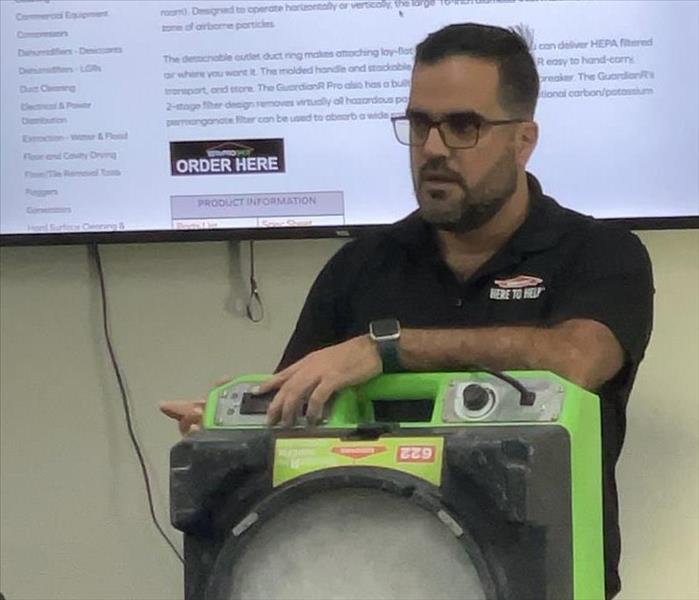 Heydrich Kattar Hernandez training his team
Heydrich Kattar Hernandez training his team
In his 2 short years with SERVPRO® Team Nicholson, representing our Orlando location, Heydrich Kattar Hernández has proved endless in zeal, integrity, and a desire for personal and professional development. As we celebrate having Heydrich on board, we not only commemorate his individual successes but also the mentorship and inspiration he offers to our entire team.
In November 2021, Heydrich started with us as a laborer, bringing enthusiasm and an eagerness to learn. His tenure has been marked by significant, quick growth, shaped by his willingness to serve in a variety of roles. He says the diverse experiences—from working on various residential and commercial jobs to the challenges of long hours and extensive travel—have enriched his professional journey.
Now serving as Production Operations Manager within our Training Division, Heydrich continues offering a high standard of service as he uses his passion for making a meaningful impact on our customers’ and employees’ lives. He says, "I've had the privilege of meeting people from all walks of life and contributing to helping others in their homes."
Heydrich embodies the SERVPRO Team Nicholson culture that values knowledge-sharing, encouragement, and opportunity. He says,
“I am sincerely thankful for the belief placed in me, the opportunities to share knowledge, and the continuous support from colleagues who have been mentors and guides. Special appreciation goes to those who have dedicated time to teach, coach, or offer support.“
Heydrich's journey with SERVPRO of Altamonte Springs / Longwood and SERVPRO Team Nicholson not only marks a personal achievement, but serves as a testament to the power of teamwork and constancy.
Today, Heydrich is excited about the future as he focuses on scouting for talent that aligns with our core values, and continues to help our team grow and improve. Cheers to Heydrich!
Follow the story on our LinkedIn.
How Can SERVPRO of Altamonte Springs/Longwood Help with Waste?
7/12/2023 (Permalink)
SERVPRO of Altamonte Springs/Longwood Helps with Waste
Although SERVPRO of Altamonte Springs/Longwood is well-known for fire and water restoration, you may not know that we offer hazardous waste disposal. Our highly-trained professionals can help you or your business with biohazard, vandalism, and crime scene cleanup. We specialize in removing and cleaning common hazardous wastes such as bloodborne pathogens, sewage backups, illegal drugs, hoarding situations, crime scene residues, and more. We are trained to safely decontaminate these situations in accordance with OSHA and CDC regulations. Our sanitizing agents, antimicrobial treatments, thermal foggers, and deodorization agents help us make your property “Like it never even happened.”
When you experience a biohazard concern or have hazardous waste on your property, leave the responsibility of hard cleanup to us. Bloodborne pathogens, bodily fluids, and other contaminated waste can cause problems. Follow these steps after contamination.
- Call SERVPRO of Altamonte Springs/Longwood immediately at (407) 830-9899 for biohazard cleanup.
- Stay out of infected areas.
- Call first responders if the situation is life-threatening.
- Treat all areas and/or bodily fluids as if they are contaminated.
- Turn off the HVAC system if there is sewage damage.
Don’t wait to call us when you have a biohazard emergency. These situations can leave home and business owners feeling vulnerable, violated, and unsafe. SERVPRO of Altamonte Springs/Longwood is here for you 24/7, 7 days a week at (407) 830-9899.
5 Questions about Flooded Drywall
7/11/2023 (Permalink)
1. What Is a Flood Cut?
When your home has been damaged by floodwaters, the water restoration professionals in Orlando, FL, will cut out the wall at least 12 inches above where flood damage stopped. This is called a flood cut.
2. What Happens When Drywall Gets Wet?
When drywall, or plasterboard, gets very wet, or when it is wet for a long time, it loses structural integrity. When this happens, the wall becomes soft and weak. Additionally, the area could see mold growth and become discolored or smelly.
3. Is It Necessary To Tear Out Wet Wallboard?
A speedy response may save the wall. However, if the drywall has obviously absorbed moisture, or if it is soft, stained, obviously wet, or smelly, it must be removed and replaced. This job can expose you to hazards. Instead of taking personal risks, contact a local water damage specialist.
4. What Are the Main Concerns With Flooded Walls?
Flooding carries a high risk of contamination. Floodwaters may carry infectious diseases, chemicals, and other pollutants. These can lead to problems for your family if those contaminants are allowed to remain in your home after soaking into the plasterboard.
5. Should Drywall Be Recycled or Destroyed?
Some plasterboard can be recycled if it consists of gypsum powder and paper (as well as some additives). Unfortunately, most of the drywall pulled out ends up in landfills. Some water restoration professionals will haul the materials off for you. If not, reach out to an appropriate source for recycling.
Flooding leads to many concerns, but contaminated drywall shouldn't be a serious problem. Don't wait for further trouble before you take action. Instead, contact the leading industry-certified water reconstruction professionals at SERVPRO of Altamonte Springs/Longwood, to put your home back in shape.
Pink Residue: Understanding and Preventing the Fungal Menace in Your Bathroom
3/9/2023 (Permalink)
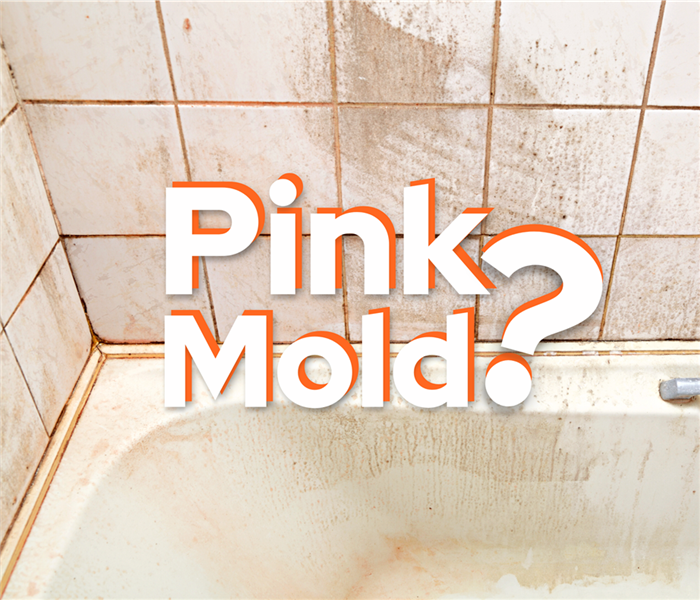 pink-colored grime is actually a result of a specific type of mold called serratia marcescens
pink-colored grime is actually a result of a specific type of mold called serratia marcescens
As a homeowner, you have an endless list of projects to manage. You step into the shower and notice the once-white grout on the floor is now a shade of pink. Over time, the inside of your shower curtain and tub ledges tell the same story. You might think that the pink color is a result of neglect and lack of proper cleaning, but the truth is that the pink-colored grime is actually a result of a specific type of mold called serratia marcescens.
Understanding Where Pink Mold Grows
Serratia marcescens thrives in damp, warm environments such as bathrooms and kitchens. This type of mold is known for its pink, red, or orange color, which can make it easy to spot. It can grow on a variety of surfaces, including tile, grout, silicone, and other materials commonly found in bathrooms. It can also form on surfaces that are frequently exposed to water, such as shower curtains, bath mats, and other bathroom fixtures. The mold can also be found in the drain area where water and soap scum accumulate.
Preventing Pink Mold Growth
This type of mold can produce an unpleasant musty odor and can aggravate allergies and asthma symptoms. It is crucial to clean and sanitize your bathroom regularly to prevent the growth of serratia marcescens and other types of mold. This includes cleaning the tub, shower, and sink, as well as other fixtures that are exposed to water. If you notice any mold in your bathroom, it is important to address the issue as soon as possible.
At-Home Remedies
Mold can be a common problem in homes, particularly in areas that are damp or have poor ventilation. While it is important to address the root cause of mold growth, such as fixing leaks or improving ventilation, there are several at-home ways to effectively reduce small amounts of mold. Remember to wear protective gear, such as gloves and a mask, when cleaning. For spot-treatment, try:
- Vinegar: Mix equal parts white vinegar and water and spray the solution onto the affected area. Let it sit for several hours before scrubbing with a brush and wiping clean.
- Baking Soda: Mix 1/4 tablespoon of baking soda with water to make a paste, then apply it to the affected area. Let it sit for several hours before scrubbing with a brush and wiping clean.
- Hydrogen Peroxide: Mix 1 part hydrogen peroxide with 2 parts water and spray the solution onto the affected area. Let it sit for several minutes before scrubbing with a brush and wiping clean.
- Tea Tree Oil: Mix 1 teaspoon of tea tree oil with 1 cup of water and spray the solution onto the affected area. Let it sit for several hours before scrubbing with a brush and wiping clean.
While these at-home remedies can be helpful for small spot-treating, larger or more severe cases require professional intervention.
Trusting the Professionals at SERVPRO
SERVPRO of Altamonte Springs/Longwood, a professional cleaning and restoration company, can help homeowners address mold and other issues in your home. Their trained technicians use advanced equipment and techniques to safely and effectively remove mold and prevent it from returning.
They can also provide a range of services such as cleaning, sanitizing, and deodorizing to keep your home looking and smelling fresh. Don't let mold take over your home. Trust the experts at SERVPRO Team Nicholson to get the job done right and give you peace of mind. With their help, you can enjoy your clean and fresh-smelling shower once again.
Women in Restoration: Potential Unlocked
3/8/2023 (Permalink)
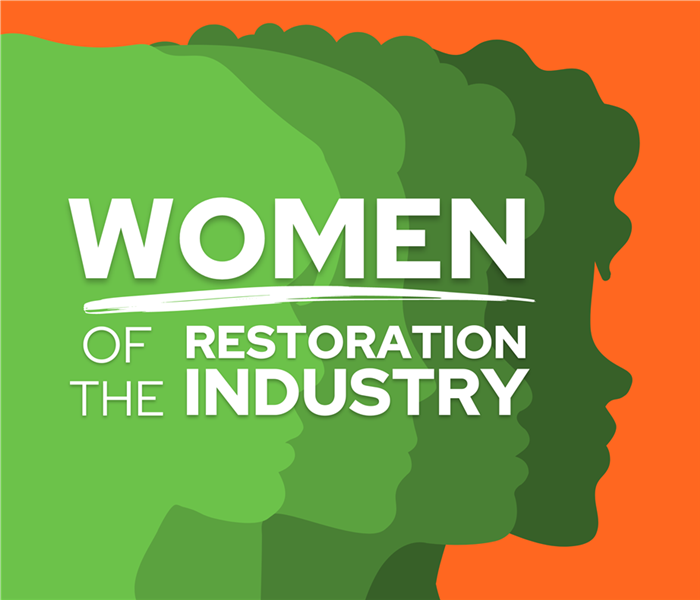 We’re excited and proud to be a part of the future of the restoration industry.
We’re excited and proud to be a part of the future of the restoration industry.
Half of all SERVPRO Franchise Owners are women.¹ Surprised?
Not us. Although women make up just under 11% of the construction workforce, and about a fifth of the restoration workforce, when we look at our team, we see women excelling daily in a variety of roles from Production Technician to Construction Manager.
Our SERVPRO community is fostering an atmosphere where all employees can form genuine working relationships with their colleagues, embracing the unique perspective of each individual to provide the best cleaning and restoration services for our clients.
Why the Restoration Industry?
The restoration and remediation industry is nurturing by nature. We’re often interacting with clients after extreme damage to their property. It takes a team of empathetic people to support our clients through some of the worst days of their lives.
Jessica Dooley, Construction Manager at our SERVPRO of Bartlett/Cordova location in Memphis, TN reassures her clients to, “keep your eye on the prize because at the end of this, and this will end eventually, it will be over and everything is going to be beautiful again.” She also prioritizes setting realistic expectations and communicating frequently, often texting updates to her clients, and keeping them in the loop every step of the way.
The restoration industry provides a unique opportunity to make a positive impact on people's lives during their most challenging moments, and employees like Jessica exemplify the caring and supportive approach that sets our team apart.
Investing in Potential
Women make up 33% of Team Nicholson’s workforce, more than double the industry average. Why? We invest in potential. Our Financial Controller, Cassie Wyatt, started her SERVPRO journey on the Production side of the house, as a Construction Administrator. As one of our more tenured female employees, Cassie has witnessed Team Nicholson’s exponential growth and fostered her own success along the way.
She says, “I’ve stayed with SERVPRO and Team Nicholson for almost nine years because there is so much opportunity to learn and grow with the company.” Cassie shares that during her time, it’s been amazing to see other women earn opportunities to advance within the organization as well, especially those under her leadership.
She wants to keep the momentum going by sharing her knowledge with others who are just starting out, helping them achieve their career goals. She adds, “...the best advice I can give other women is to just be consistent. Keep pushing, keep working hard, keep learning, and absorb as much knowledge as you possibly can. Your knowledge is your power!”
Keep the Momentum Going
Our Training Director, Lori Wilson, is a driving force behind our company’s training and development initiatives, creating opportunities for all employees to obtain industry certifications and learn best practices. With over 10 years of experience in the restoration field, Lori is using her expertise to help other women go after leadership roles.
Lori was recently appointed as an advisor for the Women in Leadership program at the University of Tennessee at Knoxville’s Center for Professional Learning. She shared her enthusiasm in a recent Facebook post, “...In the restoration industry women in leadership roles is becoming more prevalent, and that is very exciting!”
Lori has thrived in this industry, earning IICRC certifications as a Master Water Restorer, Master Fire Restorer, Master Textile Restorer, and IICRC Instructor. She loves, “...helping people see their potential as leaders and helping them grow..”
Lead the Way
At SERVPRO Team Nicholson, we’ve witnessed the positive impact a diverse workplace can have on our employees and our customers. We’re excited and proud to be a part of the future of the restoration industry.
Sources: ¹John Sooker, SERVPRO Executive Vice President, US Bureau of Labor and Statistics, Zippia
What It’s Really Like to be a Restoration Professional: Hidden Challenges of the Disaster Recovery Industry
3/7/2023 (Permalink)
 While on the job, crews learn some of the unique challenges that are not immediately apparent to those outside the industry.
While on the job, crews learn some of the unique challenges that are not immediately apparent to those outside the industry.
Hidden Challenges of the Disaster Recovery Industry
The restoration industry is critical to the rebuilding and recovery process of commercial and residential properties after disasters, such as fires, floods, and storms. These industry professionals work tirelessly to help homeowners and business owners return to their properties as quickly and safely as possible.
While on the job, crews learn some of the unique challenges that are not immediately apparent to those outside the industry.
These challenges, while daunting, are actually a great opportunity to showcase skills and problem-solving abilities. Here are some of the hidden challenges faced by restoration professionals and what it's really like to work in the disaster recovery industry.
What It’s (sometimes) Like to Work as a Restoration Professional
- Limited Accessibility
Some areas of the building may be difficult to access, such as CRAWL SPACES, attics, or basements. Restoration professionals must be able to navigate these spaces safely and effectively in order to properly assess and mitigate the damage. Thankfully, the International Residential Code (IRC) now requires crawl space entrances to measure a minimum of 16 inches high and 24 inches wide.
- Time Constraints
Restoration work needs to be done quickly in order to minimize the damage and PREVENT FURTHER DETERIORATION. This can be challenging, particularly in the aftermath of a major disaster spanning a large region, like when Hurricane Ida hit the gulf. When a large region is affected, multiple buildings need to be restored at the same time. In general, a 24/7 emergency service restoration professional should be on-site within a few hours of being contacted—if not sooner—to assess the damage, develop a plan to mitigate it and begin the restoration process. The specific timeline for response may vary based on factors such as the severity of the damage, the location of the property, and the availability of resources.
- Unforeseen Complications
Sometimes, the damage is more extensive than originally thought, or hidden issues are discovered during the restoration process. Anyone who has taken on a home renovation project knows the construction adages all too well. Restoration professionals must be able to adapt to these complications and develop new plans of action as needed to keep the project going, as is within their means.
- Dealing with Insurance Companies
Restoration professionals often need to work with insurance companies and their adjusters to get the necessary coverage for the restoration work. This can be a time-consuming and complicated process, particularly when dealing with large-scale damage. However, the frequency of these transactions can make professionals familiar with insurance claims, creating a more efficient experience for all parties.
- Keeping Up with the Latest Technologies and Techniques
The restoration industry is constantly evolving, with new technologies and techniques being developed all the time. Restoration professionals must be able to stay up-to-date with these changes in order to provide the most effective and efficient service. Thankfully, SERVPRO takes training seriously and invests heavily in their employees' frequent education and development.
Rewarding
Working as a restoration professional can be as rewarding as it is demanding. It takes a dedicated individual to pursue this line of work, but there are many positives to the job that make it all worthwhile.
Why Choose Restoration?
- To help people in their time of need and make a real difference in their lives
- To work in a dynamic, fast-paced environment with new challenges every day
- To develop a wide range of skills, from construction to communication and customer service
- For career growth and industry advancement opportunities
- To work with a team of like-minded individuals who share a common goal of helping others
- To CONTRIBUTE TO THE COMMUNITY and make a positive impact on the local area
- For job security in a career, as disasters and emergencies will always occur and restoration services will always be in demand
Can SERVPRO be a Career?
The restoration industry offers a diverse range of career paths and opportunities for professional growth. If you're looking for a dynamic work environment that allows you to make a difference in people's lives, then SERVPRO may be the perfect fit for you.
With over 50 years of experience in the industry, SERVPRO offers a wide range of career paths.


 24/7 Emergency Service
24/7 Emergency Service





